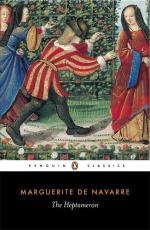In his vexation of spirit, however, he resolved, if he could, to retort upon the King, and knowing that women, especially such as are of lofty and honourable minds, are more moved by resentment than by love, he made bold one day while speaking with the Queen (5) to tell her that it moved his pity to see her so little loved by the King.
5 This was Mary (daughter of Henry III. of Castile), who was married to King Alfonso at Valencia on June 29, 1415. Juan de Mariana, the Spanish historian, records that the ceremony was celebrated with signal pomp by the schismatical Pope Benedict XIII. The bride brought her husband a dowry of 200,000 ducats, and also various territorial possessions. The marriage, however, was not a happy one, on account of Alfonso’s licentious disposition, and the Queen is said to have strangled one of his mistresses, Margaret de Hijar, in a fit of jealousy. Alfonso, to escape from his wife’s interference, turned his attention to foreign expeditions. According to the authors of L’Art de Verifier les Dates, Queen Mary never once set foot in Italy, and this statement is borne out by Mariana, who shows that whilst Alfonso was reigning in Naples his wife governed the kingdom of Aragon, making war and signing truces and treaties of peace with Castile. In the Heptameron, therefore, Margaret departs from historical accuracy when she represents the Queen as residing at Naples with her husband. Moreover, judging by the date of Mary’s marriage, she could no longer have been young when Alfonso secured the Neapolitan throne. It is to be presumed that the Queen of Navarre designedly changed the date of her story, and that the incidents referred to really occurred in Spain prior to Alfonso’s departure for Italy. There is no mention of Mary in her husband’s will, a remarkable document which is still extant. A letter written to her by Pope Calixtus II. shows that late in life the King was desirous of repudiating her to marry an Italian mistress named Lucretia Alania. The latter repaired to Rome to negotiate the affair, but the Pope refused to treat with her, and wrote to Mary saying that she must be prudent, but that he would not dissolve the marriage, lest God should punish him for participating in so great a crime. Mary died a few months after her husband in 1458, and was buried in a convent at Valencia.—L. and Ed.
The Queen, who had heard of the affection that existed between the King and the gentleman’s wife, replied—
“I cannot have both honour and pleasure together. I well know that I have the honour whilst another has the pleasure; and in the same way she who has the pleasure has not the honour that is mine.”
Thereupon the gentleman, who understood full well at whom these words were aimed, replied—




